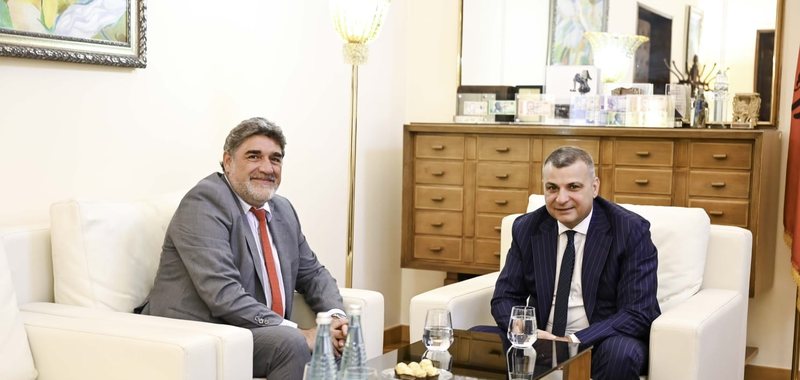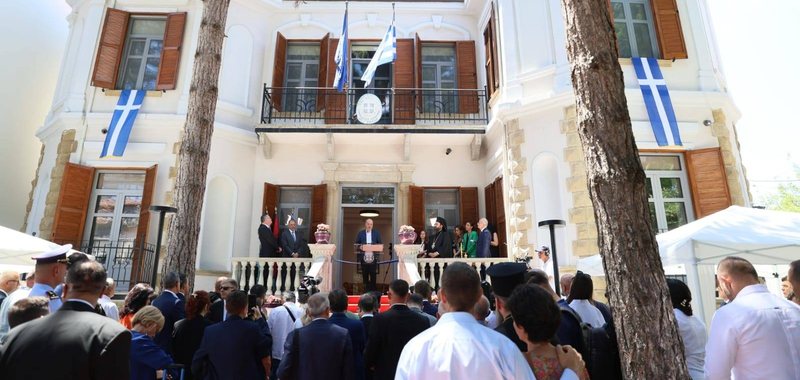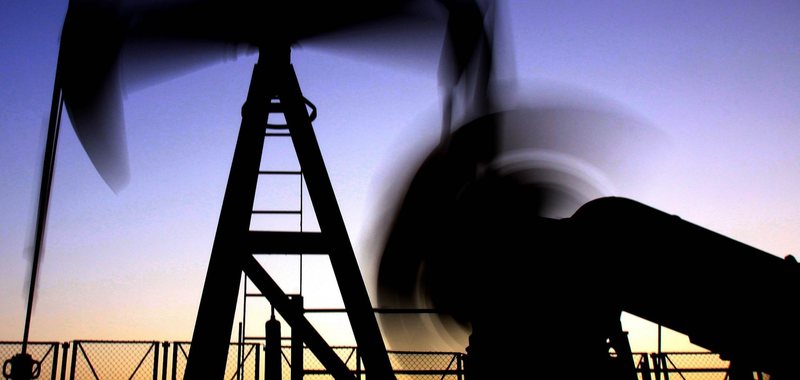A është Europa e përgatitur për luftë? - Më zvogëlimin e mbështetjes nga SHBA, NATO po forcon kufirin lindor me Rusinë

Ushtarë të kamufluar, me armët gati për të qëlluar, artileri dhe më pas shpërthime në kufirin midis Rusisë dhe Finlandës. Mund të duken si skena lufte, por këto janë stërvitjet që zhvillohen çdo muaj mes rekrutëve të “Rojes Kufitare të Finlandës”.
“Në Finlandë, mbrojtja e vendit është një vlerë vërtet e rëndësishme”, thotë rekrutja Milja Sandhu. “Të gjithë kanë kërkuar të jenë këtu dhe motivimi është vërtet i lartë. Kjo thirrje mund të tingëllojë më realiste në kohë si këto”, shton ajo.
Shoku i saj në togë, Kasperi Luoto, e përshkruan atë si “një thirrje”. “Finlanda ka një gatishmëri vërtet të lartë për të mbrojtur veten”. Lufta në Evropë ka ndryshuar mënyrën se si njerëzit duan të shërbejnë”, thotë ai.
Nënteksti i kësaj loje lufte është jashtëzakonisht serioz. Hyrja e Finlandës në NATO në vitin 2023 e dyfishoi kufirin e aleancës mbrojtëse me Rusinë në gati 2,600 km, duke u shtrirë nga Arktiku deri në Bjellorusi.
Ndërsa Moska është aktualisht e zënë me pushtimin e saj në shkallë të plotë të Ukrainës, shumë njerëz përgjatë këtij kufiri presin që Presidenti rus Vladimir Putin një ditë ta kthejë vëmendjen drejt krahut lindor të NATO-s. Ekonomia ruse është tashmë e orientuar drejt konfliktit dhe ambiciet imperialiste të Putinit mund të nënkuptojnë se ajo do të vazhdojë të kërkojë pushtime diku tjetër.
Sekretari i përgjithshëm i NATO-s, Mark Rutte, paralajmëroi muajin e kaluar se Moska mund të jetë gati të përdorë forcën kundër aleancës “brenda pesë viteve”. “Le të mos gënjejmë veten, tani jemi të gjithë në krahun lindor”, tha Rutte. Presidenti ukrainas, Volodymyr Zelensky më vonë deklaroi se Rusia po planifikonte “operacione të reja ushtarake në territorin e NATO-s”, në një fjalim të mbajtur në samitin e aleancës.
Ndërsa Presidenti amerikan, Donald Trump, i siguroi aleatët sapo mbërriti në samit se ishte “me ta gjatë gjithë kohës”, ai i trembi kryeqytetet europiane orë më parë, me një sugjerim se pakti i mbrojtjes së ndërsjellë i aleancës ushtarake, i njohur si Neni 5, ishte i hapur për interpretime.
Presidenca e tij ka ngritur pikëpyetje të mëdha, se sa e fortë dhe afatgjatë do të jetë garancia amerikane e sigurisë, duke i vendosur aftësitë mbrojtëse të Europës në mikroskop, në një mënyrë të paparë për dekada.
Fogh Rasmussen, Sekretari i Përgjithshëm i NATO-s nga viti 2009 deri në vitin 2014, sugjeron se Putini do të fitojë besim dhe një “oreks edhe për më shumë territor” nëse i lejohet suksesi në Ukrainë. “Ai do të ushtrojë presion mbi shtetet baltike. Dhe kur një president amerikan ngre publikisht dyshime në lidhje me angazhimin e tij ndaj Nenit 5, kjo mund ta tundojë Putinin të vërë në provë vendosmërinë e NATO-s”, shprehet Rasmussen.
Moska tashmë po ndërmerr hapa për të rritur praninë e saj rajonale. Imazhet satelitore tregojnë aktivitet të shtuar në bazat ruse pranë krahut lindor të NATO-s, duke përfshirë fushat ajrore të Levashovo, Kamenka dhe Olenya, që ishin objektiv i sulmeve me dronë nga Ukraina.
Ndërtesa të reja magazinimi vihen re rreth 175 km nga kufiri i Finlandës, ndërsa zonat janë pastruar dhe është shtruar asfalt i ri për avionët në bazën ajrore të Severomorsk-1, rreth 120 km në lindje të Norvegjisë.
Shumë nga vendet anëtare të NATO-s në Europën Lindore po nxitojnë të rrisin shpenzimet e tyre të mbrojtjes, për të mbushur boshllëqet në aftësitë ushtarake nën presionin e Rusisë dhe Trump.
Aleatët e NATO-s riafirmuan “angazhimin e tyre të palëkundur ndaj mbrojtjes kolektive” në samitin e fundit, si dhe ranë dakord të rrisin shpenzimet e mbrojtjes në 5% të PBB-së gjatë dekadës së ardhshme, megjithëse ka njëfarë fleksibiliteti në lidhje me shumën që do të angazhohen për mbrojtjen në vijën e parë. Spanja siguroi një zgjedhje të diskutueshme duke premtuar të përmbushë qëllimin e aftësive të NATO-s me një kosto më të ulët.
Por disa vënë në pikëpyetje nëse investimet shtesë do të vijnë mjaftueshëm shpejt. “Ne të gjithë duam ta pengojmë Rusinë, duke treguar forcë, duke rritur aftësitë tona. Por nga ana tjetër, Putin do ti bëjë llogaritë në një moment, nëse mendon se mund të fitojë. Ne duhet të sigurohemi që ai të mos i llogarisë gabim”, thotë një zyrtar i inteligjencës.
Ekspertët ushtarakë thonë se interesi i Moskës në shtetet kufitare është i ndryshëm nga mënyra se si e sheh Ukrainën. Në vend të një pushtimi në shkallë të plotë, Putini ka të ngjarë të testojë nëse NATO do të reagonte. “Për Rusinë, qëllimi strategjik do të ishte të shkatërronte NATO-n; nuk bëhet fjalë për blerjen e një pjese toke në Baltik apo gjetkë”, thotë Kristi Raik, drejtore e Qendrës Ndërkombëtare për Mbrojtje dhe Siguri në Estoni.
Në pikën më veriore të krahut lindor ndodhet Norvegjia. Ndan një kufi prej 200 km me Rusinë, dhe është normale që vendet europiane të rrisin praninë ushtarake aty. Qeveria e Norvegjisë planifikon të zgjerohet nga 1 brigadë ushtarake në 3 deri në vitin 2032, me dy të stacionuara në veri.
Forcat e saj tokësore në rajonin kufitar të Finnmark, ku shumë tabela rrugore janë në norvegjisht dhe rusisht, do të plotësohen me armët e mbrojtjes ajrore, një batalion artilerie dhe këmbësori e lehtë, një kompani inteligjence dhe një forcë të dedikuar për reagim të shpejtë. Diku tjetër në Norvegjinë veriore, do të ngrihet një brigadë e re këmbësorie e rëndë.
Kryeministri i Norvegjisë, Jonas Gahr Støre, thotë se, megjithëse nuk ka ndonjë kërcënim të menjëhershëm, të gjitha vendet në vijën e frontit janë të vetëdijshme se Rusia planifikon të rivendosë distriktet e saj të ndara ushtarake të Moskës dhe Leningradit, të cilat ishin bashkuar në vitin 2010. Është një veprim që zyrtarët e inteligjencës perëndimore mendojnë se synon të dyfishojë numrin e trupave ruse.
“Norvegjia nuk është kërcënim për askënd, por është përgjegjësia jonë të sigurohemi që askush të mos dalë me idenë për të na kërcënuar”, thotë Støre. Pak veta mendojnë se një sulm rus ndaj NATO-s do të fillonte me veriun e ftohtë të Norvegjisë kontinentale.
Por ka shqetësime në lidhje me një provë të vogël në arkipelagun e demilitarizuar arktik të Svalbardit, i cili është territor norvegjez, por edhe shtëpia e një vendbanimi rus.
Të qenit në NATO për 20 vite, do të thotë që vendet baltike ndihen më të sigurta sesa kanë qenë për një kohë të gjatë. Prania në rritje e NATO-s në vendet baltike mund të shihet në poligonin e madh të stërvitjes në Pabrade, afër kufirit rus në Lituani, me imazhe satelitore që tregojnë struktura të reja të ndërtuara midis viteve 2022-25 dhe nivele më të larta aktiviteti.
Vendet baltike dhe Polonia udhëheqin rritjen e shpenzimeve ushtarake dhe janë gati të arrijnë objektivin e Trump prej 5% vitin e ardhshëm. Pete Hegseth, sekretari amerikan i mbrojtjes, i quajti së fundmi të katër vendet si “aleatë model”.
Edhe bashkëpunimet ndërkufitare po fillojnë të aplikohen. Batalione shumëkombëshe janë vendosur në secilin prej shteteve baltike dhe në Poloni, me Gjermaninë që do ta rrisë praninë e saj në Lituani në vitet e ardhshme në një brigadë të plotë prej rreth 5,000 ushtarësh - rreth shtatë herë më shumë se numri aktual. Ideja është që trupa të huaja nga vende si SHBA-ja, Mbretëria e Bashkuar, Franca dhe Kanadaja do të përfshihen që nga fillimi i çdo konflikti.
Edhe Polonia po fortifikon kufijtë e saj, pasi ka ndërtuar tashmë një gardh çeliku 5.5 metra të lartë përgjatë 186 kilometrave të kufirit të saj me Bjellorusinë, fillimisht në përgjigje të “luftës hibride” për të cilën akuzoi Bjellorusinë dhe Rusinë se e kishin nisur në vitin 2021 duke inkurajuar emigrantët e paligjshëm të kalonin në Poloni. Kohët e fundit, Varshava e ka përforcuar këtë mbrojtje, duke instaluar kamera nate dhe termike, si dhe duke ndërtuar një rrugë të re për të ndihmuar në patrullimin e kufirit.
Por projekti më ambicioz i mbrojtjes së kufijve të Polonisë është e ashtuquajtura “Mburoja Lindore”, që përfshin një miksim të sistemeve të mbrojtjes ajrore dhe infrastrukturës tokësore.
Muajin e kaluar, presidenti rus, Vladimir Putin, i cilësoi deklaratat se Moska ishte një kërcënim në rritje, si “të pakuptimta” dhe tha se shpenzimet ushtarake në rritje të Europës ishin “të paarsyeshme”.
Por çdo dështim për t'iu përgjigjur fuqishëm agresionit të ardhshëm nga Rusia do të sinjalizonte fundin e aleancës. Prandaj, shumë gjëra mund të varen nga fakti nëse Putini ndihet i inkurajuar nga rezultati i luftës së tij në Ukrainë.

Sejko pret ambasadorin Ventura: Zgjerim i bashkëpunimit financiar me Spanjën!
Në datën 7 korrik 2025, Guvernatori Gent Sejko priti në një takim zyrtar në Bankën e Shqipërisë, Ambasadorin e ri të Mbretërisë së Spanjës në Shqipëri,......

Korçë, inaugurohet godina e re e Konsullatës së Përgjithshme të Greqisë! - Hasani: Moment domethënës në marrëdhëniet dypalëshe!
Sot në Korçë u inaugurua godina e re e Konsullatës së Përgjithshme të Greqisë, një investim që shënon një moment domethënës në marrëdhëniet dypalëshe. Në......

Turizmi mjekësor: “Fytyrë të re? Shko në Shqipëri!” - Lala: Shërbimet estetike janë shumë here më lirë se në botë
Ky është vetëm një nga shumë shtetas italianë – dhe jo vetëm – që kanë ardhur në Shqipëri për turizëm mjekësor. Ndonëse sipas INSTAT, gjatë periudhës......

Sa vlen një euro në Shqipëri? Vendet më të lira dhe më të shtrenjta në Europë sipas EUROSTAT
Çmimet ndryshojnë ndjeshëm midis vendeve në Europë, sipas të dhënave të Eurostat. Ndërkohë, ekzistojnë dallime të konsiderueshme edhe midis vendeve fqinje si......

Nxehtësia ekstreme shton viktimat në ambientet e punës - Këto vdekje janë rritur me 43% në Evropë që nga viti 2000
Temperaturat e larta kanë shkaktuar një rritje prej 42% të vdekjeve në ambientet e punës në BE që nga viti 2000. Organizatat e punës kërkojnë masa mbrojtëse......

Gjirokastër, përfundon kalldrëmi lidhës në zonën e “7 Krojeve” - Edi Rama: Shtegu i ri krijon një tjetër pol turistik në qytetin e gurtë
Në Gjirokastër kanë përfunduar punimet e kalldrëmeve dhe rrugës lidhëse në zonën e “7 Krojeve”. Një video të mbylljes së punimeve e ka shpërndarë......

Sa peshë zënë bankat në ekonomi? - BSH: Aktivet, të barabarta me 90.44% të Prodhimit të Brendshëm Bruto
Bankat vijojnë të zënë një peshë të konsiderueshme në ekonominë e vendit. Megjithatë, në vitin që lamë pas është regjistruar një rënie e aktiveve në raport......

Albpetrol nxjerr 26 550 ton naftë - Të dhënat për janar – qershor 2025, nga 5 vendburimet e kompanisë publike
Rreth 26 550 ton naftë është prodhuar nga Albpetrol në 6 muajt e parë të vitit 2025, në të gjithë vendburimet që administrohen nga kompania publike.......


















